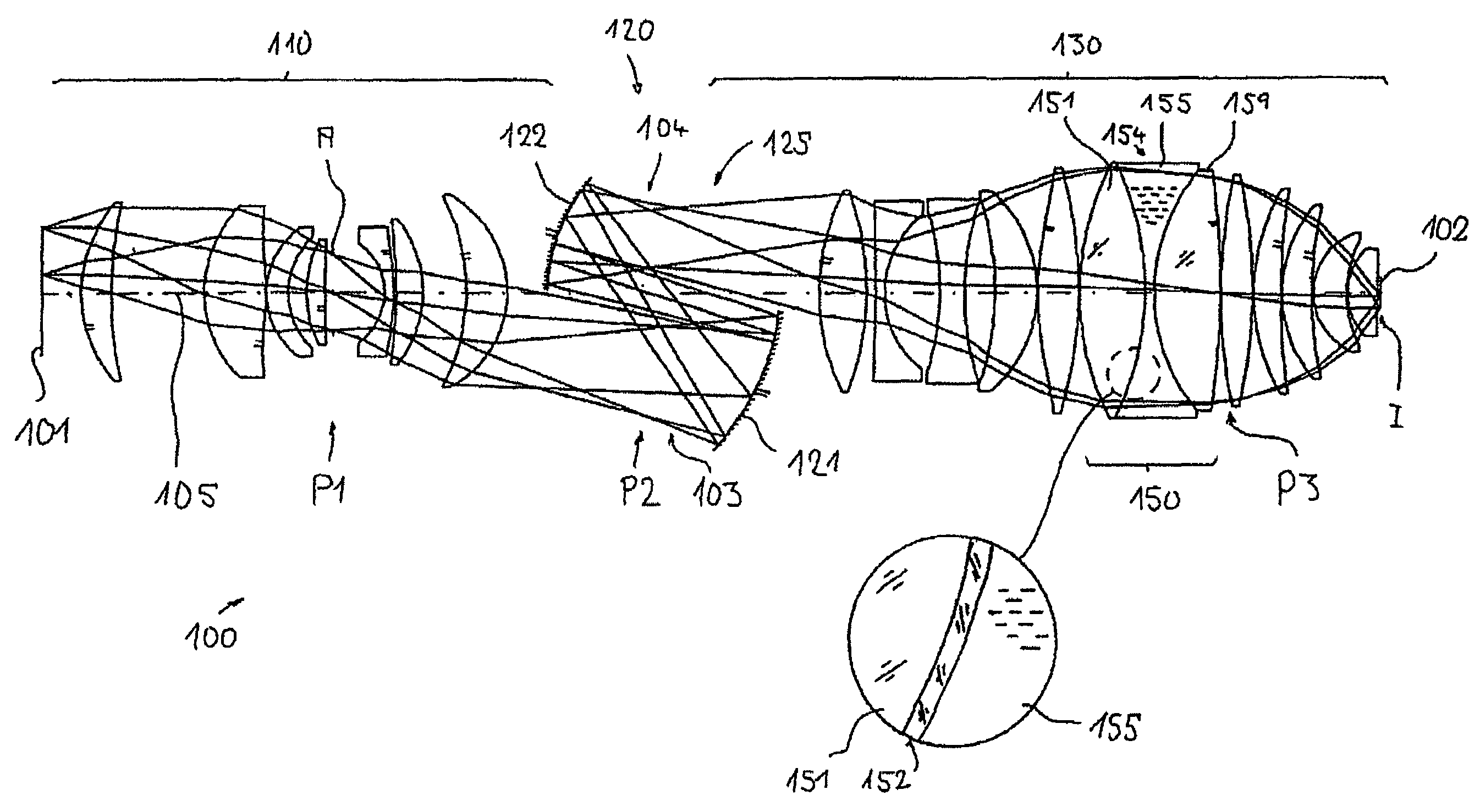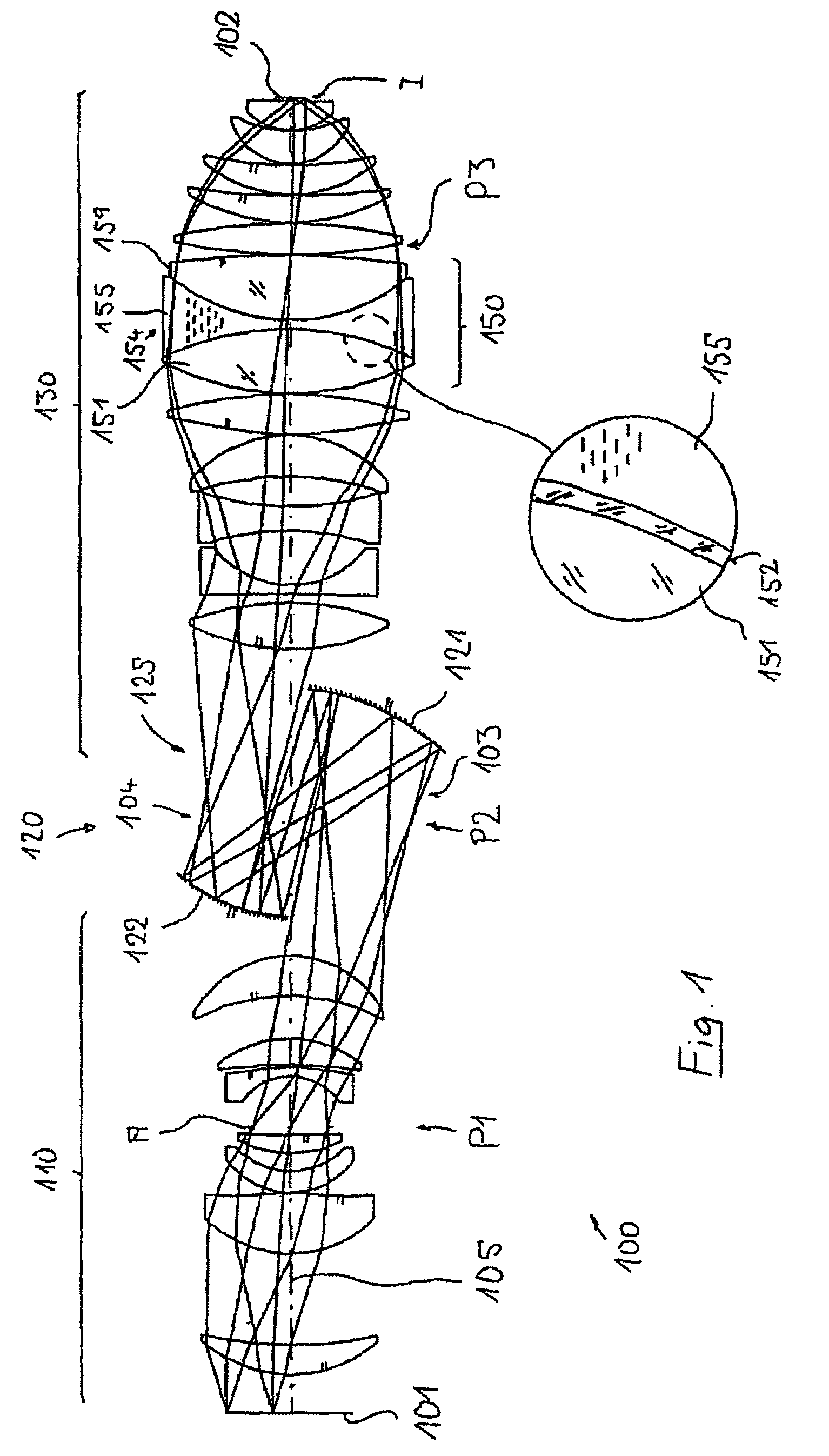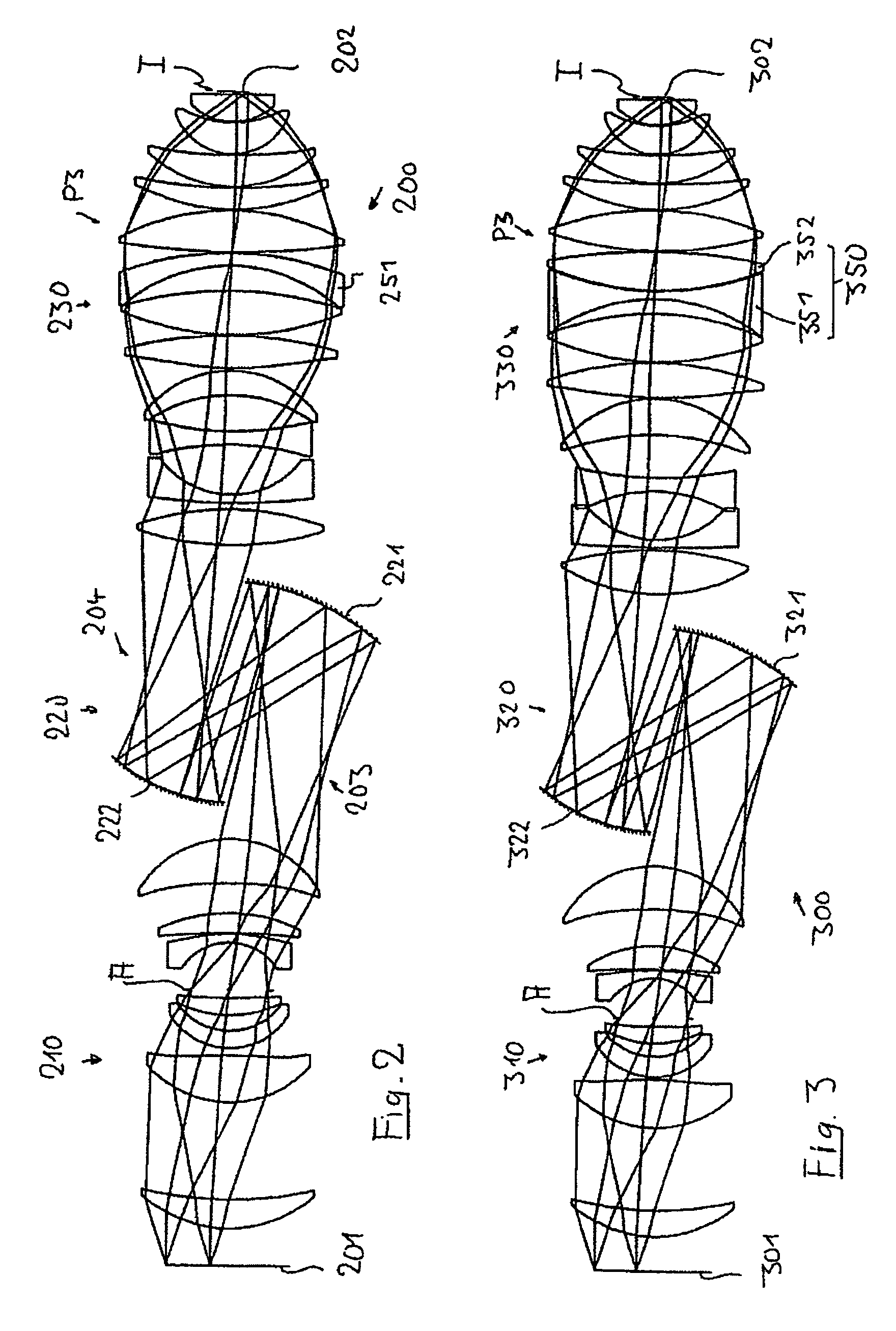Optical system for ultraviolet light
an optical system and ultraviolet light technology, applied in the field of optical systems for ultraviolet light, can solve the problems of chromatic aberration, difficult to provide purely refractive systems with sufficient correction of color errors, and insufficient material availability for producing transparent optical elements, etc., to achieve high numerical aperture, effective numerical aperture, and high refractive index
- Summary
- Abstract
- Description
- Claims
- Application Information
AI Technical Summary
Benefits of technology
Problems solved by technology
Method used
Image
Examples
Embodiment Construction
[0049]The invention is explained below on the basis of exemplary embodiments in which optical imaging systems are optimized in the form of projection objectives for microlithography in accordance with the invention.
[0050]FIG. 1 shows an embodiment of a catadioptric projection objective 100 designed as an immersion objective for an operating wavelength of approximately 193 nm. It is provided for imaging a pattern of a mask arranged in its object plane 101 onto its image plane 102 oriented parallel to the object plane, on a reduced scale, for example on a scale of 4:1. In this case, precisely two real intermediate images 103, 104 are generated between object plane and image plane. A first, purely refractive (dioptric) objective part 110 is designed in such a way that the pattern of the object plane is imaged into the first intermediate image 103 on a magnifying scale. A second, purely reflective (catoptric) objective part 120 images the first intermediate image 103 into the second int...
PUM
 Login to View More
Login to View More Abstract
Description
Claims
Application Information
 Login to View More
Login to View More - R&D
- Intellectual Property
- Life Sciences
- Materials
- Tech Scout
- Unparalleled Data Quality
- Higher Quality Content
- 60% Fewer Hallucinations
Browse by: Latest US Patents, China's latest patents, Technical Efficacy Thesaurus, Application Domain, Technology Topic, Popular Technical Reports.
© 2025 PatSnap. All rights reserved.Legal|Privacy policy|Modern Slavery Act Transparency Statement|Sitemap|About US| Contact US: help@patsnap.com



